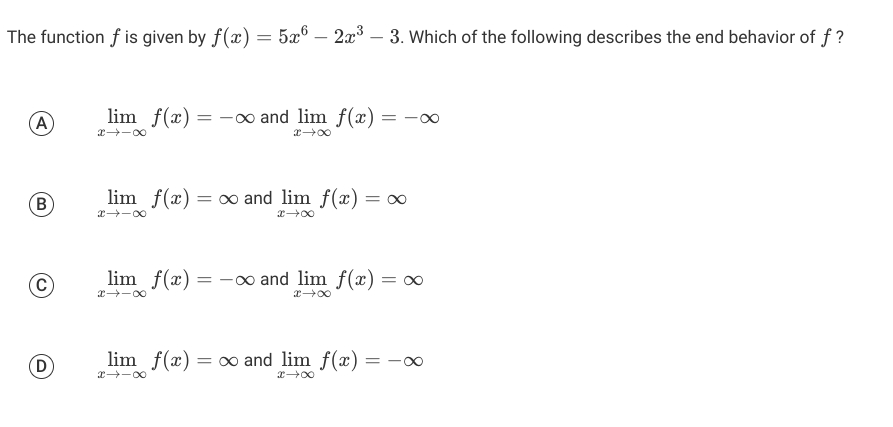Full solution
Q. The function is given by . Which of the following describes the end behavior of ?(A) and (B) and (C) and (D) and
- Identify Leading Term: Identify the leading term of the polynomial function. The leading term of the polynomial is because it has the highest power of .
- Determine End Behavior: Determine the end behavior based on the leading term.Since the leading term is , and the coefficient is positive, as approaches infinity, the function will approach positive infinity. Similarly, as approaches negative infinity, the function will also approach positive infinity because the leading term has an even power.
- Match End Behavior: Match the end behavior with the given options.The correct end behavior is that approaches positive infinity as approaches both positive and negative infinity. This matches option (B).

